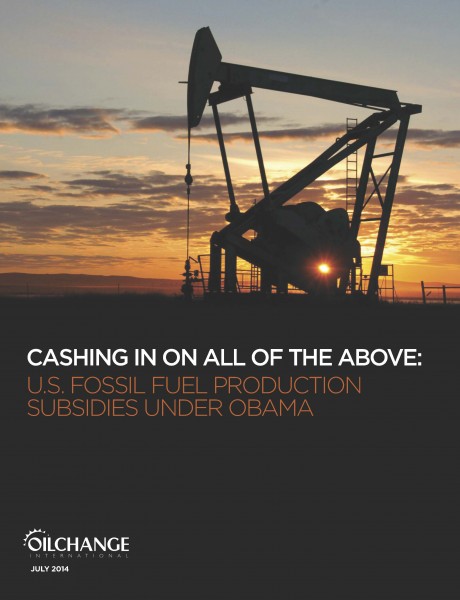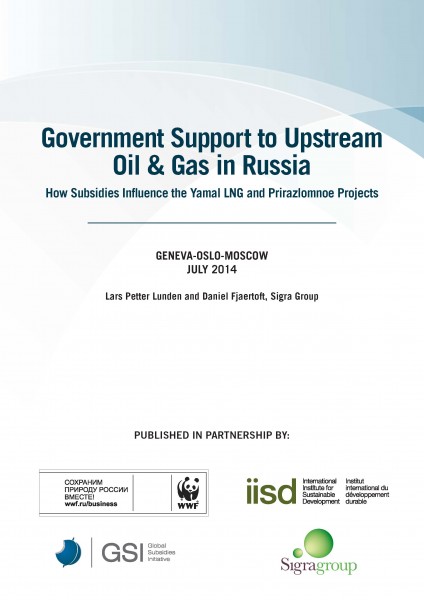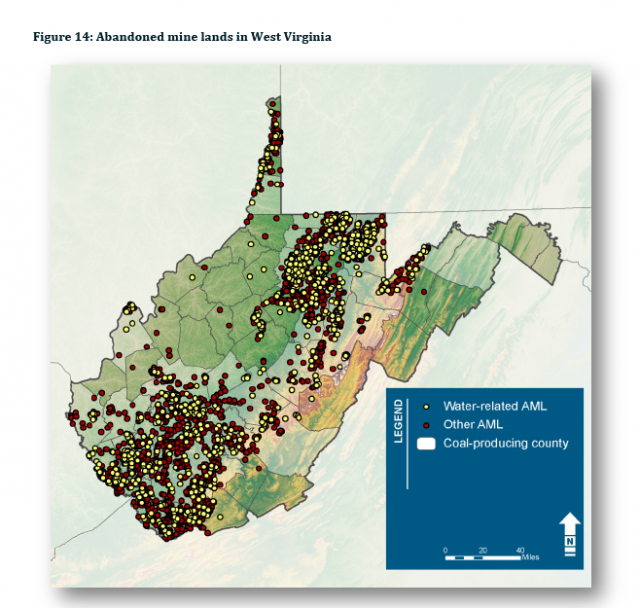Management Information Services, Inc. (MISI), a Washington, DC-based consulting firm, has periodically released a tally of historical subsidies to energy in the United States. The most recent compilation came out in October 2011, covering the period 1950 to 2010. Continuing its multi-decade long relationship with the nuclear industry (dating back to the US Council for Energy Awareness), this report was produced for the Nuclear Energy Institute. The report concludes that only geothermal energy (which for some reason has been broken out from other renewables) has lower subsidies than nuclear.
I can't argue with the goal of MISI's work: it would indeed be wonderful to have a clear view of sixty years of federal support. Unfortunately, MISI's reports really don't get us there. The reliance on MISI's subsidy data for this recent study on renewables competitiveness underscored for me the need to provide additional context on MISI's numbers, and to highlight at least some of the issues I have with their figures.
 In comparison to DOE's early reviews of energy subsidies in the late 1970s and early 1980s (which MISI founder Roger Bezdek has mentioned he was involved with), it is immediately clear that the details in MISI's 60-year tallies are sparse indeed. Subsidies to oil, which they report at almost $370 billion between 1950 and 2010, are described in a mere half page of text (p. 24). The lack of detail obviously makes it impossible to systmatically review their assumptions and omissions with anything close to the level of detail I could do with EIA's work on subsidies.
In comparison to DOE's early reviews of energy subsidies in the late 1970s and early 1980s (which MISI founder Roger Bezdek has mentioned he was involved with), it is immediately clear that the details in MISI's 60-year tallies are sparse indeed. Subsidies to oil, which they report at almost $370 billion between 1950 and 2010, are described in a mere half page of text (p. 24). The lack of detail obviously makes it impossible to systmatically review their assumptions and omissions with anything close to the level of detail I could do with EIA's work on subsidies.
However, even the brief summary descriptions provide sufficient information to identify a number of material problems in MISI's work. Correcting these problems would substantially change both the total subsidy values and their distribution across fuel types. The resource likely to show the sharpest increase in subsidies under a more neutral assessment would be nuclear.
Here are some of the most important problems I saw in the MISI study:
1) Looking at free cash rather than the actuarial balance of energy related trust funds. The United States has many energy-related trust funds. They are often established to accrue money for cleaning up past messes or to create a capability to act quickly on new ones. Like social security, the trust funds need to be evaluated on a long term (in some cases, decades-long) actuarial basis. Only over this problem lifecycle can the inflows be matched with the expected cost to meet the need for which each trust fund was created.
MISI instead looks at current cash balances. For example, they offset other nuclear subsidies with an $18 billion credit for unspent contributions in the Nuclear Waste Fund. This "credit" is their second largest entry in the nuclear column on an absolute value basis, after government support for nuclear R&D.
Given that the fund has been created to cover a very long-term liability with great cost and delivery uncertainty, MISI's approach is just wrong. A short-term surplus is not necessarily indicative of funding adequacy, and should not be netted from other sources of nuclear subsidy. It is hard to imagine an analyst looking at social security's current surplus, apply the MISI logic to it, and conclude that there no shortfall to worry about.
Further, substantial subsidies continue to be associated with the repository. As noted in a detailed and widely peer-reviewed study I did on subsidies to nuclear power last year (see section 7.2, page 96):
...the very structure of the NWF [Nuclear Waste Fund] and associated federal services constitute an enormous subsidy to the nuclear power sector even if there are no additional funding shortfalls. In essence, the program nationalizes responsibility for nuclear waste management, providing it as a goverment service to private industry on, at best, a break-even basis. Ancillary subsidies from this decision -- ranging from the tax-exempt status of the federal enterprise to the uncompensated risk-bearing by taxpayers -- greatly reduce the financial cost of nuclear waste management to the private sector.
When looking at other sectors, MISI recognizes that government construction and operation of infrastructure can generate very large subsidies to recipients. In fact, this type of subsidy provides by far the largest source of support they've quantified for hydroelectricity ($65.8 billion -- page 26). Why they have ignored this logic for nuclear is not clear.
2) Accelerated depreciation and other tax breaks. The zero entry for tax subsidies to nuclear over the past 60 years in MISI's summary table is a big red flag that something is amiss with their nuclear subsidy history. Aside from particularly favorable accelerated depreciation rules, nuclear also benefited from 35 years of investment tax credits (there were special rules for utilities during much of that time), special tax rules on nuclear decommissioning, and a tax-exempt status of key parts of it fuel cycle including enrichment (for most of the industry's history) and nuclear waste management (for all of its history).
Accelerated Depreciation. MISI ignores accelerated depreciation entirely on the grounds that multiple sectors of the economy gets it. This exclusion is done via a footnote that has been in all of the recent MISI reports (see page 23 of the October 2011 report). It concludes that nuclear's 15 year write-off period is part of the baseline, and there are "no specific tax expenditures for nuclear depreciation."
This is problematic. The Treasury includes accelerated depreciation for all asset classes where the write-off period is shorter than the service life as a tax expenditure item, though doesn't break out every single asset class into a separate line item within the tax expenditure budget. Nonetheless, MISI's conclusion that the 15-year accelerated depreciation period (other thermal power technologies are classed at 20 years) is not a subsidy "under the reference tax law standard used by the U.S. Department of the Treasury, OMB, and the Joint Committee on Taxation..." seems wrong.
The oversight here is not limited to the nuclear sector alone. There are numerous other energy-related asset classes for which tax depreciation is artificially accelerated, but that are not evaluated in the MISI data. The benefits are not equal across all assets, or across all forms of energy. They are likely highest for nuclear and for renewables.
MISI's own numbers do recognize that the faster write-off of multi-year assets provides a subsidy under our tax system in some areas of their assessment. For example, they include expensing of exploration and development costs for coal, oil, and natural gas. And, while the terms may differ, the way the provisions provide subsidies really don't: expensing is merely accelerated depreciation that occurs in a single year.
MISI may include other depreciation-related tax breaks to fossil fuels as well, stating only that the tax expenditure totals reported result "primarily" from the items they list (EIA, for example, includes items such as treating natural gas gathering lines as 7-year property while also ignoring asset classes not broken out by Treasury). But they are missing many important ones as well, and as a result greatly understate historical subsidies to energy-related capital formation.
The value of accelerated depreciation subsidies increases the more capital-intensive the industry; the larger the difference between allowable write-off period and actual asset service life; and the higher the cost of capital for investment. This makes accelerated depreciation for nuclear particularly valuable. Consider that despite having a license period of 40 years (with actual service life expected to be 60 or more), nuclear reactors can be written off in only 15 -- 5 years faster even than other thermal power technologies. The risk of cost overruns also makes the sector's cost of capital higher than other power resources; as a result, the higher up-front deductions that accelerated depreciation provides are relatively more valuable.
Tax breaks for nuclear decommissioning. The largest subsidy to decommissioning is a lower tax rate on investment earnings for nuclear decommissioning trusts (NDTs) than for other types of taxable entities (20 percent versus 35%). This tax break alone is worth between $450 million and $1.1 billion per year to the sector (page 95 here). The value of the subsidy will continue to grow as the investment base of the NDT grows over time.
Tax-exempt enrichment and nuclear waste services. For decades, the federally-owned Uranium Enrichment Enterprise was the only enrichment game in town. It operated as a publicly-owned, tax-exempt entity. It paid no taxes, had no required return on billions in investment taxpayer capital, and during various points of its operating history sold its services below cost.
The Nuclear Waste Fund is expected to have system life cycle costs approaching $100 billion, though costs for mega-projects normally run way over estimates. Further the repository has many of the same types of subsidies as did the UEE: tax-exempt status, no required return on investment, and tremendous risk to taxpayers (not facility customers) from delays or technical problems.
MISI counts none of these subsidies in its review. However, they do count the tax-exempt operations of federal hydro facilities, another example of inconsistent treatment across fuels.
3) Mischaracterization of exemptions from price controls
MISI treats exemptions from oil and gas price controls as subsidies to oil and gas, worth somewhere around $100 billion in their totals (the total category of "oil regulation" includes higher-than-average allowed rate of return on pipelines as well, but doesn't provide details on the relative shares). In general, price controls are a de facto tax on an industry that would be reduced by exemptions, not the other way around.
I'd need more detail to see whether their arguments on pipeline rates of return make sense or not. However, even if they do hold up, it is notable that MISI did not count regulatory aberrations on the nuclear side, such as continued pass-through of cost overruns and stranded costs, as subsidies to nuclear. In both cases, regulatory misjudgments artificially boosted returns to a particular sector.
4) Inconsistent treatment of federal spending on energy infrastructure
MISI properly counts federal spending on dams and related infrastructure, and the tax exemption of public hydro facilities from federal income taxes, as subsidies to hydroelectric power. They also capture the unrecovered cost of ports and harbors used to move bulk coal and oil (these fuels comprise more than 50% of the tonnage moved through the nation's inland waterway system).
However, as noted above, they do not count federal spending on nuclear infrastructure (e.g., the Uranium Enrichment Enterprise) and the tax-exemptions of publicly-owned nuclear power output from federal taxation as subsidies to nuclear. While they do seem to pick up the use of tax exempt private activity bonds used for energy infrastructure, there are other types of tax exempt debt that have been used in large measure to finance energy systems in the country that are not being counted.
MISI also ignores the subsidized investments into oil stockpiling via the Strategic Petroleum Reserve, and the associated financing costs of its large oil inventory.
5) Improper framing of federal spending on oil and gas leasing operations as a subsidy to oil and gas
The federal government does spend money to survey fossil fuel resources, prepare them for sale, oversee the leases, collect and audit royalty payments, and ensure that sites are properly closed down. However, treating these costs as a subsidy in the abstract is incorrect. Rather, these are the costs of managing and selling the country's "product" (it's natural resource reserves), and should be viewed as offsets to the revenues from those leasing activities, reducing the net return on the sale of public minerals.
Whether or not leasing activity is earning an appropriate return net of costs is a separate question. To answer it, we would need to evaluate bid process on federal leases to ensure they are competitive, and how the cost structure of federal oversight compares to that incurred in other countries or private leases. One can't focus only on the administrative costs.
Further, where there are problems with lease competition, the subsidy magnitude from lost resource rents is likely to dramatically exceed the relatively small administrative costs that MISI has captured. Allegations of below-market coal leases in the Powder River Basin provide a useful example: losses on this area alone have been estimated to approach $30 billion.
To their credit, MISI did pick up Nuclear Regulatory Commission regulatory costs that were not recovered through user fees as a subsidy to nuclear.
6) Missing categories. Some important categories of support are missing entirely from MISI's historical subsidy review:
Insurance and insurance caps. Liability caps on damage from nuclear accidents (via the Price-Anderson Act) is a huge subsidy to nuclear power. The only hint that MISI is aware of this subsidy is that they list liability on Exhibit 11 (page 21) as included in the disbursement category. No cost is associated with the program, however; instead, they seem to be applying the same cash-flow approach to liability as they did to trust funds, though don't explicitly state this in the text.
The cost of auto insurance doesn't drop to zero just because you've not had an accident, and the same is true with insurance for nuclear accidents. And in both cases, if the coverage levels are too low to pay for damages if there were a plausible accident, there are clearly residual risks being transferred on to somebody else.
The proper treatment of insurance subsidies is to assess whether risks are being transferred to the public without appropriate compensation because of the insurance cap. Clearly they are. And, in addition to the generally known issues with liability caps for reactors, there are lesser-known coverage gaps with regards to transporters and enrichment facilities.
Insurance caps are not just relevant to nuclear energy. There are liability caps on oil spills. These caps seem somewhat easier to litigate around than those for nuclear accidents; still, legislative initiatives are ongoing to try to remove them. Further, while there is no statutory cap for catastrophic dam failures, there are significant gaps in coverage that result in subsidized operating costs for hydro. Finally, crop insurance programs have long been important for the ag sector, providing subsidized insurance policies to farmers. As corn consumption for ethanol production continues to climb (it used around 40% of total production in 2011), subsidized crop-insurance programs become as relevant to energy as they are to food. Although MISI has picked up grants to biofuels through the Commodity Credit Corporation, they have not addressed crop insurance at all.
Loan guarantees and subsidized credit. It's hard to tell if credit support is picked up somewhere in MISI's 60-year tally, but it doesn't appear to be systematically covered. The US Export-import Bank, contributions to the World Bank, OPIC, subsidized federal credit for Power Market Authorities and the Tennessee Valley Authority (via the implicit federal guarantee), and long-standing cheap financing for rural power through the Rural Utility Service (and its predecessor the Rural Electrification Administration) are all examples of subsidized credit. Over the past 60 years, these programs have provided a variety of subsidies to energy sectors, including funding and recapitalization grants, subsidized lending terms, defaults on guaranteed loans, favorable repayment rules, and reduced borrowing costs via implicit or explicit federal guarantees.
More recent credit support through loan guarantees from DOE under Title 17 of the Energy Policy Act also don't seem to be captured, though the single largest recipient thus far from the program is the Vogtle nuclear reactor project.
Tax-exempt corporate structures and tax shifting. Extractive industries make disproportionate use of corporate structures such as Master Limited Partnerships that enable the enterprises to escape corporate-level taxation entirely. They are also large beneficiaries of schemes that characterize royalty payments as foreign taxes (dual capacity taxpayers), generating more valuable tax credits than the otherwise-available tax deductions. Since MISI covers such a long period, earlier transfer pricing-related subsidies would also be relevant, such as those in the 1960s and 1970s that shifted most or all profits from oil production into the multinational firms' tanker subsidiaries, which in turn were registered in low tax countries such as Panama and Liberia.
Summary
Historical data on energy subsidies is quite useful. The information can help illustrate trends over time and product cycles, and important patterns across fuels. The historical data can also help to highlight which programs have resulted in important break-throughs leading to the development of competitive industries, and which have been a total waste of money.
However, if the historical picture is full of gaps, and similar program structures are treated inconsistently across fuels, the risk of drawing conclusions based on data artifacts rather than real trends rises sharply. This situation can be improved by having research sponsors -- even those in industry such as the Nuclear Energy Institute -- commit to, and require, line-item visibility on amounts and key assumptions. Such a level of disclosure would be higher than what MISI has ever provided in its work; however, absent such transparency one should be cautious in relying on their bottom line numbers.







 In comparison to DOE's
In comparison to DOE's 

